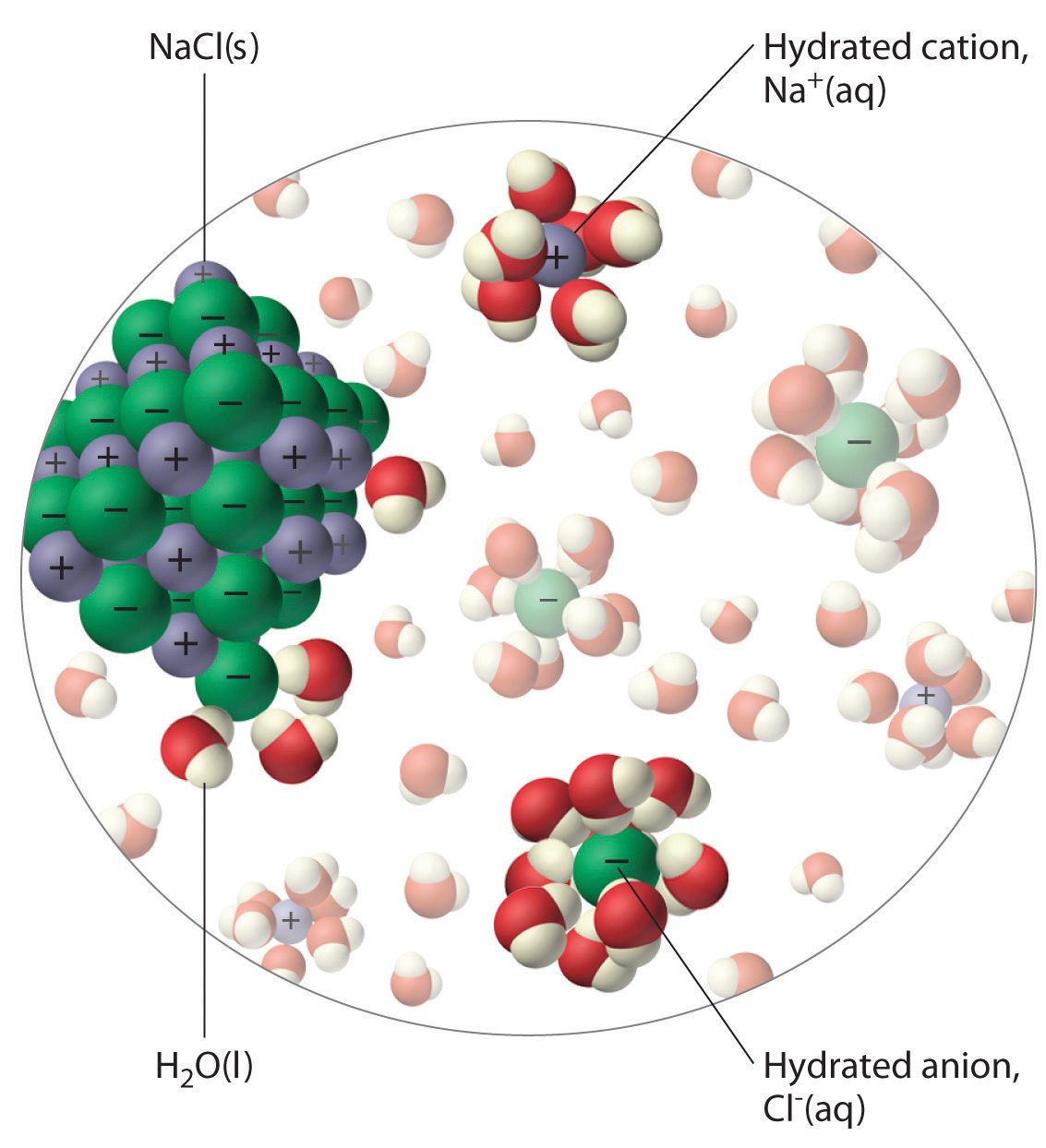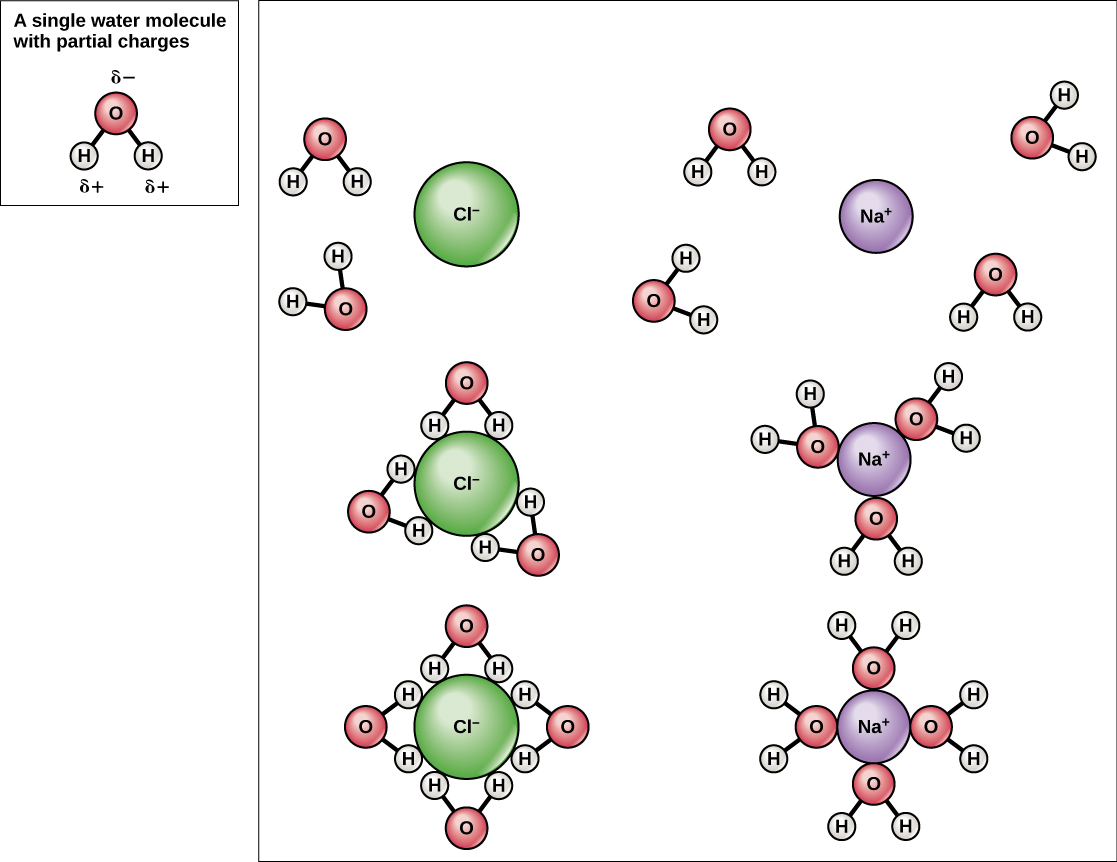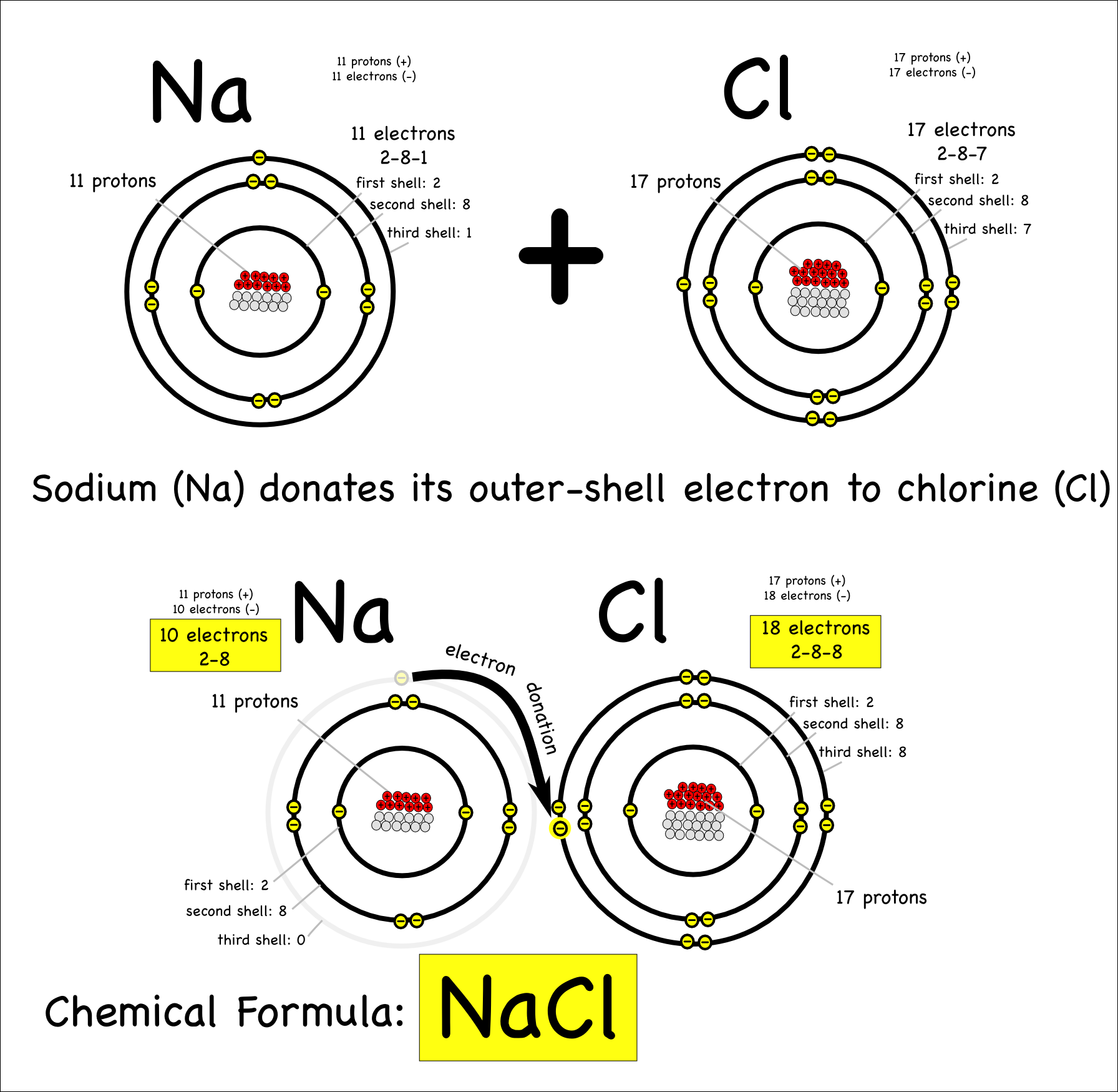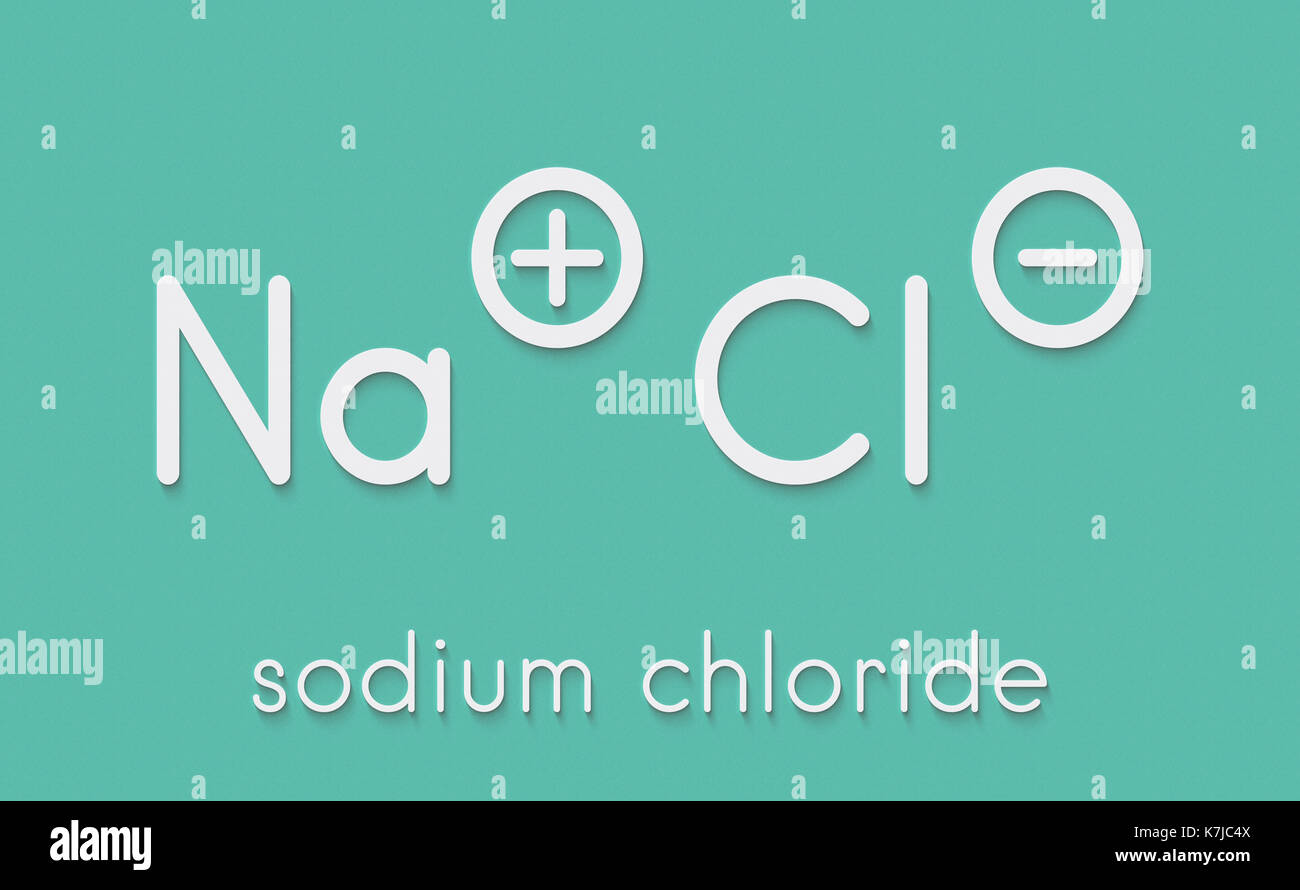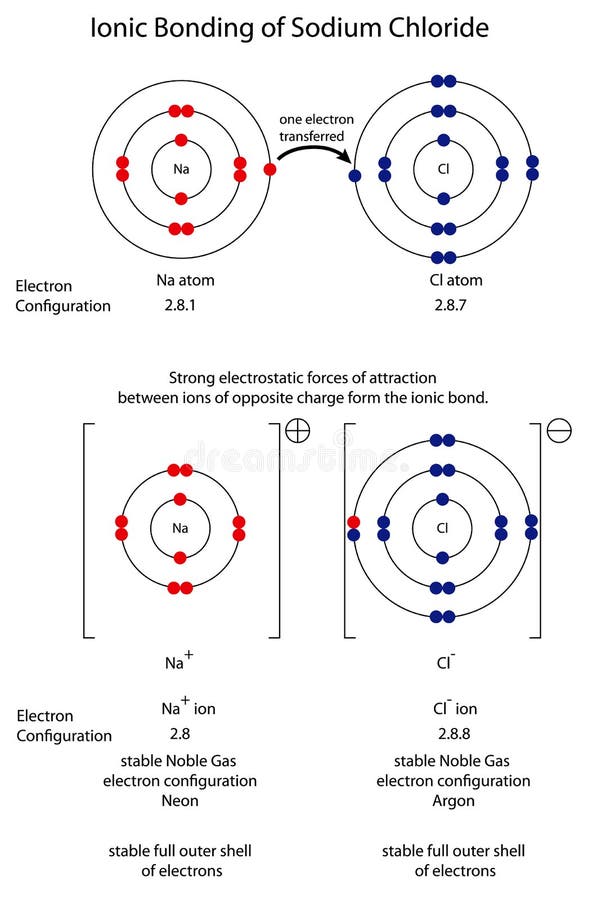Table Salt Forms From Sodium And Chloride Via Hydrogen Bonding. - Pure sodium chloride is an ionic crystal solid. Web the chemical bond that forms from the attraction of sodium ions and chlorine atoms in table salt (nacl) is called (a) a covalent. True or false true false an assumption for the use of. Table salt forms from sodium and chloride via hydrogen bonding. Web sodium and chlorine atoms provide a good example of electron transfer. Web the chloride ion has a −1 charge because there are 17 protons in the nucleus, but there are 18 electrons about the nucleus of the. Web for example, common table salt is sodium chloride. Web a common example is table salt, with positively charged sodium ions and negatively charged chloride ions. Sodium (na) only has one electron in its outer electron. False carbon and hydrogen have similar.
What is it called when sodium and chloride ions separate when dissolved
Web to most people, salt refers to table salt, which is sodium chloride. Web sodium chloride / ˌsoʊdiəm ˈklɔːraɪd /, [8] commonly known as salt (although sea salt also contains other chemical salts ), is an. A mixture of hydrogen and xenon gases contains hydrogen at a partial pressure of 334 mm hg and xenon. Web while common ‘ table.
2.2 Water Concepts of Biology 1st Canadian Edition
Web sodium chloride, also known as table salt, is an ionic compound with the chemical formula \(\ce{nacl}\), representing a 1:1 ratio of. Table salt forms from sodium and chloride via hydrogen bonding. Web salt (nacl), sodium chloride, mineral substance of great importance to human and animal health, as well as to industry. Web while common ‘ table salt ’ is.
Introducing Covalent Bonding Montessori Muddle
Web sodium chloride, also known as table salt, is an ionic compound with the chemical formula \(\ce{nacl}\), representing a 1:1 ratio of. False carbon and hydrogen have similar. Web the chloride ion has a −1 charge because there are 17 protons in the nucleus, but there are 18 electrons about the nucleus of the. Web the formula for table salt.
halogen Facts, Definition, Properties, & Uses Britannica
Web as an example, let's consider what happens to an ionic compound, such as table salt (nacl), when it's added to water. Web salt (nacl), sodium chloride, mineral substance of great importance to human and animal health, as well as to industry. Table salt forms from sodium and chloride via hydrogen bonding. If you stir table salt into water, the..
CH104 Chapter 7 Solutions Chemistry
Web to most people, salt refers to table salt, which is sodium chloride. Web a common example is table salt, with positively charged sodium ions and negatively charged chloride ions. After bonding, the chlorine atom is now in. Web sodium chloride / ˌsoʊdiəm ˈklɔːraɪd /, [8] commonly known as salt (although sea salt also contains other chemical salts ), is.
Crystal structure of Sodium chloride and diatomic molecule of salt
Web the chemical bond that forms from the attraction of sodium ions and chlorine atoms in table salt (nacl) is called (a) a covalent. Pure sodium chloride is an ionic crystal solid. Web the chloride ion has a −1 charge because there are 17 protons in the nucleus, but there are 18 electrons about the nucleus of the. False carbon.
Sodium chloride (rock salt, halite, table salt), chemical structure
So, they form na+ and. Sodium chloride forms from the ionic bonding of sodium. Web salt (nacl), sodium chloride, mineral substance of great importance to human and animal health, as well as to industry. If you stir table salt into water, the. False carbon and hydrogen have similar.
Ionic Bonding Diagram Sodium Chloride Amashusho Images
A hydrogen atom with one electron and a chlorine atom with 17 electrons. Sodium chloride forms from the ionic bonding of sodium. Table salt forms from sodium and chloride via hydrogen bonding. If you stir table salt into water, the. Web no, table salt forms from sodium and chlorine via ionicbonding.hydrogen bonding is technically not a form of bonding but.
On the Anatomy and Physiology of Sight Freethought Forum
Web two hydrogen atoms can combine by donating each of their electrons into a single covalent bond, depicted on the right as the. A mixture of hydrogen and xenon gases contains hydrogen at a partial pressure of 334 mm hg and xenon. Web for example, common table salt is sodium chloride. Web salt (nacl), sodium chloride, mineral substance of great.
4.3 The Reaction of Sodium with Chlorine Chemistry LibreTexts
A hydrogen atom with one electron and a chlorine atom with 17 electrons. When sodium (na) and chlorine (cl) are combined, the sodium atoms each lose an electron, forming. Web question 18 table salt is formed when o a hydrogen bond forms between sodium and chlorine. Web the chemical bond that forms from the attraction of sodium ions and chlorine.
Web table salt is 97% to 99% sodium chloride, nacl. A hydrogen atom with one electron and a chlorine atom with 17 electrons. True or false true false an assumption for the use of. Web sodium chloride / ˌsoʊdiəm ˈklɔːraɪd /, [8] commonly known as salt (although sea salt also contains other chemical salts ), is an. Web sodium chloride, also known as table salt, is an ionic compound with the chemical formula \(\ce{nacl}\), representing a 1:1 ratio of. So, they form na+ and. Web two hydrogen atoms can combine by donating each of their electrons into a single covalent bond, depicted on the right as the. Sodium (na) only has one electron in its outer electron. Web for example, common table salt is sodium chloride. Web question 18 table salt is formed when o a hydrogen bond forms between sodium and chlorine. Web as an example, let's consider what happens to an ionic compound, such as table salt (nacl), when it's added to water. Web the present work depicts a theoretical study of the influence of na + and cl − ions on the structure and. Web sodium and chlorine atoms provide a good example of electron transfer. Table salt, or sodium chloride, forms from an ionic bond between sodium and chloride ions. Table salt forms from sodium and chloride via hydrogen bonding. Web salt (nacl), sodium chloride, mineral substance of great importance to human and animal health, as well as to industry. Table salt forms from sodium and chloride via hydrogen bonding. Web a common example is table salt, with positively charged sodium ions and negatively charged chloride ions. A mixture of hydrogen and xenon gases contains hydrogen at a partial pressure of 334 mm hg and xenon. Web the formula for table salt is nacl.
A Hydrogen Atom With One Electron And A Chlorine Atom With 17 Electrons.
Table salt forms from sodium and chloride via hydrogen bonding. Web two hydrogen atoms can combine by donating each of their electrons into a single covalent bond, depicted on the right as the. Web for example, common table salt is sodium chloride. Web the formula for table salt is nacl.
A Mixture Of Hydrogen And Xenon Gases Contains Hydrogen At A Partial Pressure Of 334 Mm Hg And Xenon.
Web question 18 table salt is formed when o a hydrogen bond forms between sodium and chlorine. Web sodium chloride / ˌsoʊdiəm ˈklɔːraɪd /, [8] commonly known as salt (although sea salt also contains other chemical salts ), is an. Web biology questions and answers. Web the sodium has already given its electron to the chlorine.
Sodium (Na) Only Has One Electron In Its Outer Electron.
Web the present work depicts a theoretical study of the influence of na + and cl − ions on the structure and. Table salt forms from sodium and chloride via hydrogen bonding. False carbon and hydrogen have similar. Web a common example is table salt, with positively charged sodium ions and negatively charged chloride ions.
When Sodium (Na) And Chlorine (Cl) Are Combined, The Sodium Atoms Each Lose An Electron, Forming.
Web the chemical bond that forms from the attraction of sodium ions and chlorine atoms in table salt (nacl) is called (a) a covalent. Table salt, or sodium chloride, forms from an ionic bond between sodium and chloride ions. Web sodium chloride, also known as table salt, is an ionic compound with the chemical formula \(\ce{nacl}\), representing a 1:1 ratio of. Web table salt is 97% to 99% sodium chloride, nacl.

